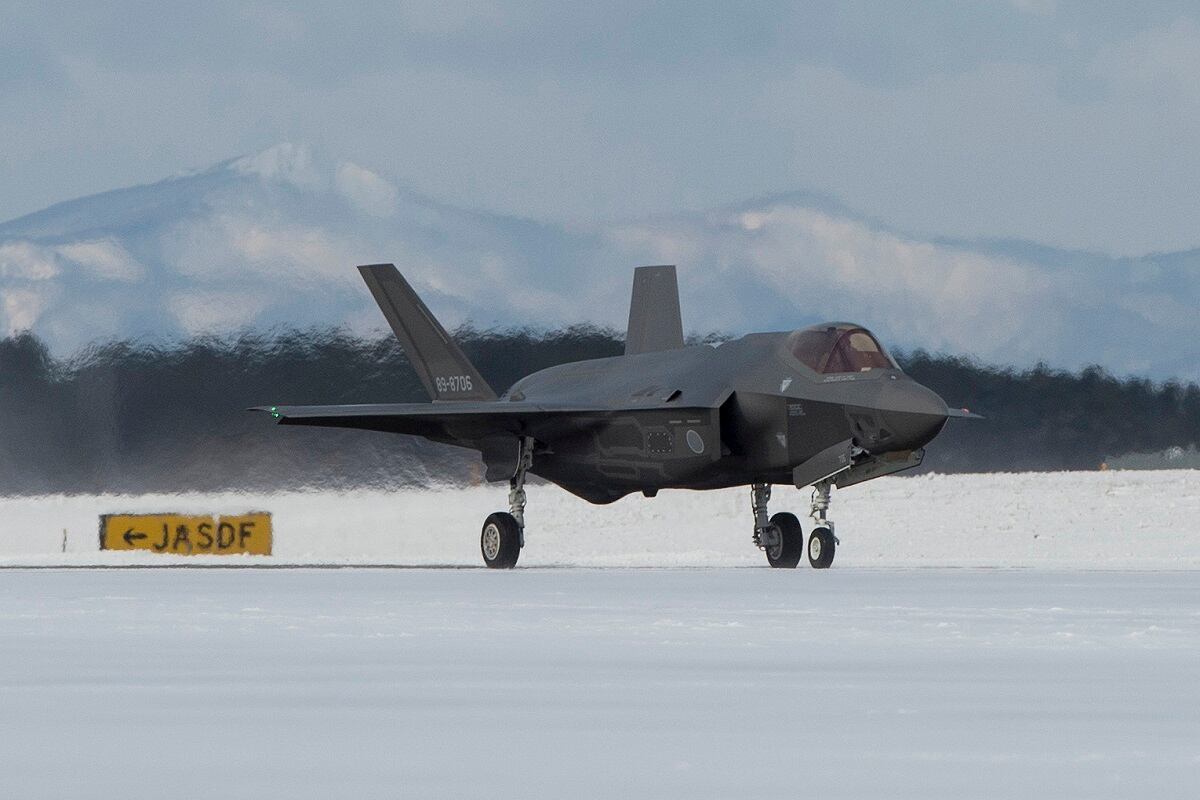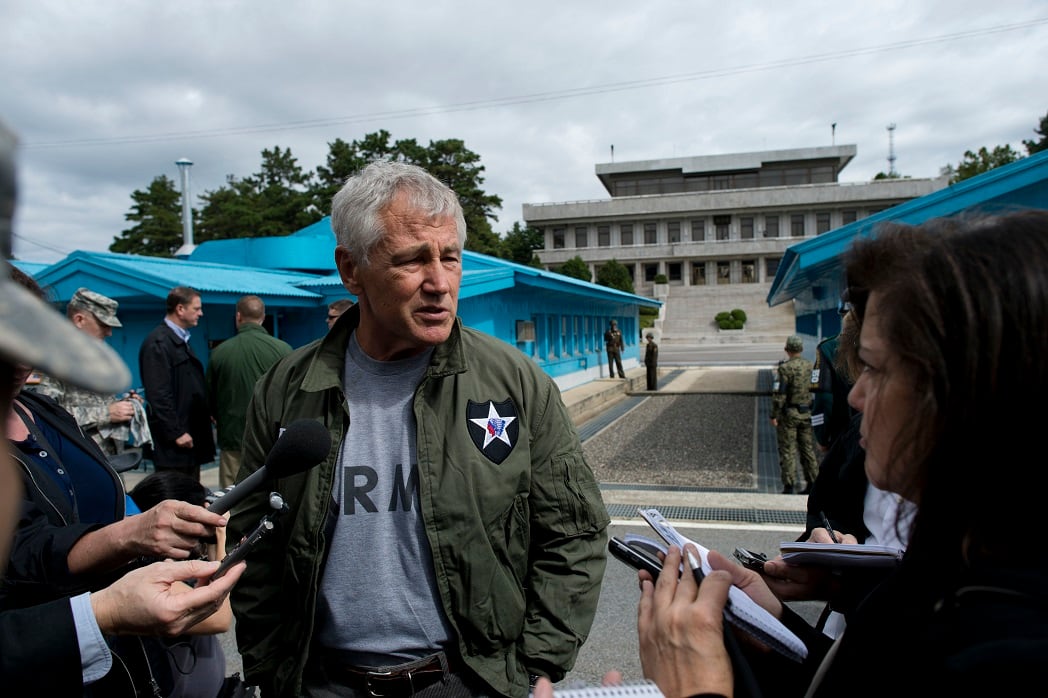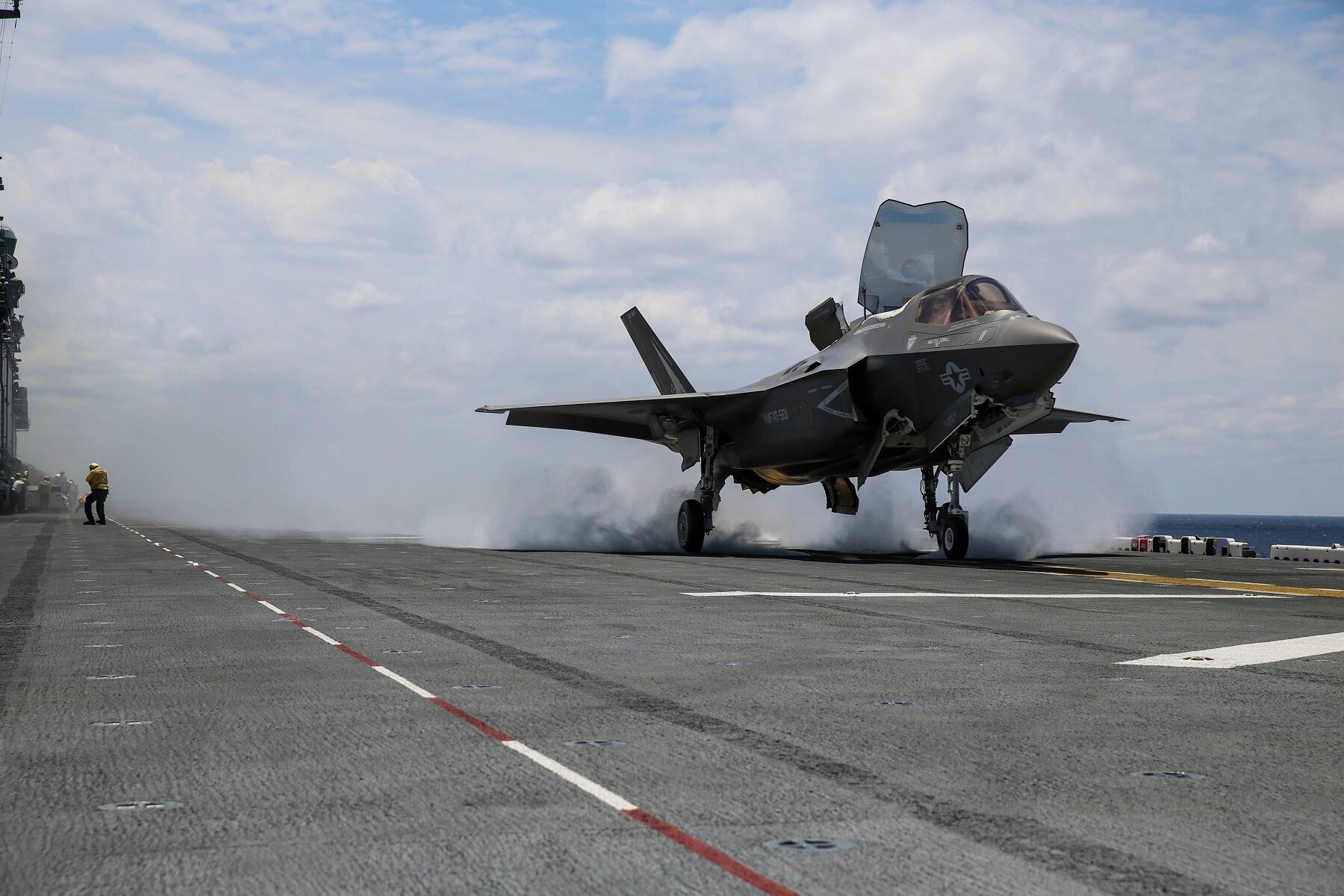WASHINGTON — Look at the skies above Kadena Air Base on the Japanese island of Okinawa and twice daily you’ll get a glimpse of U.S. Air Force F-35 fighter jets taking off, only to land several hours later. Watch the base itself and you’ll see maintainers working round the clock to ensure the service’s newest fighter jets are ready to go.
It’s been about three months since more than 300 airmen relocated from Hill Air Force Base, Utah, to Japan for the F-35A conventional takeoff and landing model’s first-ever stint in the Asia-Pacific. The first of 12 jets arrived at Kadena in late October for a six-month deployment — the longest period the 34th Fighter Squadron has spent away from home.
Although the Lockheed Martin-manufactured jets haven’t made a lot of news since their arrival in Japan, the pace of operations has been relentless.
Click here for more coverage from the Singapore Airshow.
“We’re approaching 1,000 flight hours and 500 sorties, we’ll probably have that here in the next week and a half or two weeks,” Master Sgt. Brian Sarafin, F-35A production superintendent for the 34th Aircraft Maintenance Unit, told Defense News in a Jan. 24 interview.
On any given day, the 12 F-35s at Kadena could be expected to make anywhere from 12 to 14 total sorties, meaning every plane must be quickly inspected and repaired so it is ready to fly.
“They have been doing a lot of flying with the F-15s here stationed at Kadena. That’s almost a daily thing ― that they will meet up with F-15s from here,” Sarafin said. “And I believe that they’ve also met up with the [Japan Air Self-Defense Force] airplanes a time or two as well.”
RELATED

About 20 F-35A pilots relocated to Okinawa, and they fly about two to three times a week, said Capt. Ryan Huber, the 34th Fighter Squadron’s flight commander. Most of those hours are spent training, but pilots also participate in exercises like Vigilant Ace, held in South Korea in December, where operators got to practice skills such as enemy infiltration and precision strike with U.S. military and South Korean jets.
“Some of my flights included operations with our USAF F-15C Eagle counterparts and Republic of Korea F-16s,” he said. “The experience was enlightening, as it allowed us to learn the intricacies of each other’s operating capabilities to further strengthen what we bring as a whole to the fight.”
A normal workweek for maintainers goes like this: Every morning, usually from Monday to Friday, several jets will fly a mission of about one to two hours in length. A morning shift of maintainers will be on hand to help launch and recover those jets, as well as to turn them for the second set of flights later that afternoon, Sarafin said.
A second “swing shift” of maintainers will come in before the second round of sorties have landed, and once those aircraft are back on the ground, they will begin necessary repairs to get the jets back into the air the following day. That work is continued by a third shift of maintainers, who clock in at about midnight.

“It’s a big revolving door every single day to make sure our aircraft are ready,” Sarafin said.
The Air Force’s data sponge
Tensions between the U.S. and North Korea exploded over the past year as North Korea ramped up testing of intercontinental ballistic missiles, including the Hwasong-15, which the North claims can hit the continental United States. U.S. President Donald Trump’s own comments promising “fire and fury” have kicked off debate about the administration’s willingness to escalate to a full-blown war.
Amid this delicate geopolitical landscape, the U.S. Air Force has been careful to characterize its F-35 operations at Kadena as a “long-planned deployment … designed to demonstrate the continuing U.S. commitment to stability and security in the region,” as it noted in an October news release. The deployment had been in the works since 2016, when Deborah Lee James, then the Air Force secretary under the Obama administration, announced that the “A” models could travel to the Asia-Pacific as early as 2017.
RELATED

Although the aircraft would be available in case of a contingency — and although the collection of B-2 and B-1 bombers in Guam, F-35s in Japan, and F-15s in South Korea send a powerful message to North Korean leader Kim Jong Un about the U.S. military’s capabilities — it’s unlikely that the U.S. Air Force will operate its F-35s in an attempt to provoke North Korea, said John Venable, a senior fellow for the Heritage Foundation and a former F-16 pilot.
“I don’t think we’re going to pulse the boundary,” he said. “I don’t think that there will be anything inflammatory done in an overt posturing.”
But the F-35s operating in Japan — the Air Force’s “A” models at Kadena as well as the Marine Corps’ F-35Bs, which will deployed aboard the amphibious assault ship Wasp this year — could still play a vital role in enhancing the U.S. military’s understanding of North Korea’s own military activities, especially given the jet’s classified electronic warfare package and data fusion capability that brings together imagery from the aircraft’s myriad active and passive sensors.
“I don’t know if it’s actually monitoring the television channels that people are watching in their homes or if, as soon of they get airborne, they start doing a really good assessment of what’s happening in the North,” Venable said.
“When you have the guys out on the Wasp and they’re flying, if they’re flying 100 miles off the coast of North Korea, you can bet your bottom dollar that they’re scooping up gobs and gobs of information of what’s going on inside the peninsula and then the northern side of the peninsula. And the same thing is going on with the [’A’ models].”
Go ask ALIS
Although agencies like the Government Accountability Office and the Pentagon’s independent weapons tester have criticized the F-35 program for spare parts shortages and aircraft availability problems, Sarafin said the 34th hasn’t run into any major complications during its deployment in Japan.
RELATED

“We haven’t had major surprises since we’ve been here. The jets have been performing pretty well, and we have not had many maintenance nondeliveries. When we first got here, we went over 130 sorties without dropping a single one, which was great for us and kind of unheard of for a new platform like that,” he said.
So far, the most critical challenge on the maintenance side has been setting up the aircraft’s Autonomic Logistics Information System, which allows operators to order spare parts, walk through maintenance procedures and plan missions. The 34th is using the latest version, ALIS 2.0.2.4, during this deployment.
“It’s much quicker. We have a lot of access to all the data we need on the aircraft,” Sarafin said. “Is it a perfect system? No, but it’s much better than it has been in the past few years.”
During the first days of the deployment, maintenance crews had difficulty readying the supply system and getting parts delivered on time due to customs hiccups.
But “it’s been hashed out fairly quickly,” said Sarafin, adding that the squadron did not lose any sorties due to a lack of parts. “We’re operating here almost as efficiently as we do at home station now.”
One of the new features of ALIS 2.0.2 allows the user to view and monitor data from the aircraft’s Pratt & Whitney F135 engine, which was developed specifically for the F-35. Before getting the current ALIS version, maintainers would have to download the engine data, burn it to a disc and then hand it over to a Pratt & Whitney employee, who would look at the data and ensure that the engine was safe to fly the next sortie.
“It was a time-consuming process. Sometimes you’re talking two to four hours to get the data, which could then delay your time and [decrease] the possibility of having an aircraft ready the next year,” he said. Now, because engine data flows through ALIS, it can be downloaded in five to ten minutes after the plane lands.
Valerie Insinna is Defense News' air warfare reporter. She previously worked the Navy/congressional beats for Defense Daily, which followed almost three years as a staff writer for National Defense Magazine. Prior to that, she worked as an editorial assistant for the Tokyo Shimbun’s Washington bureau.






